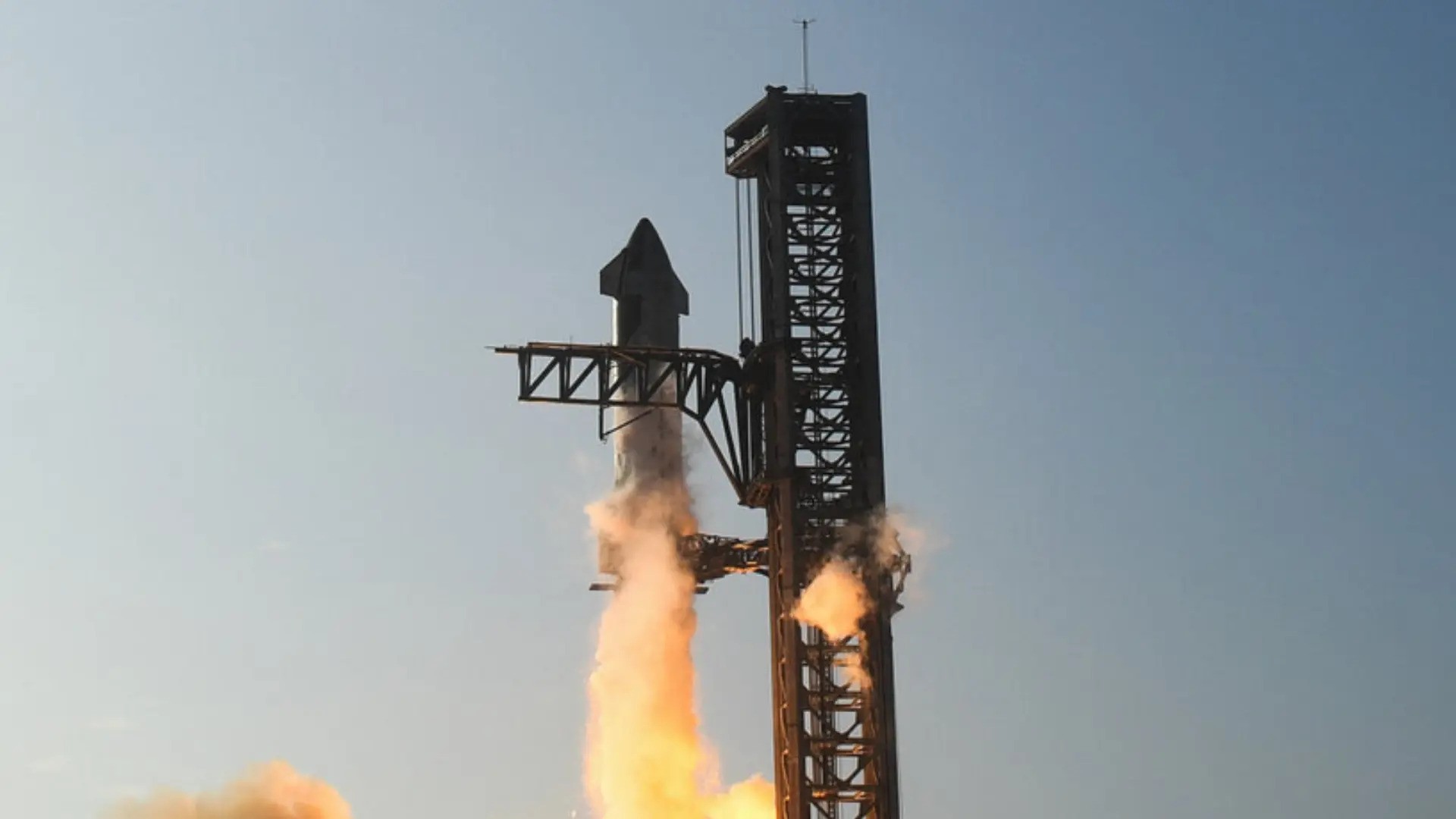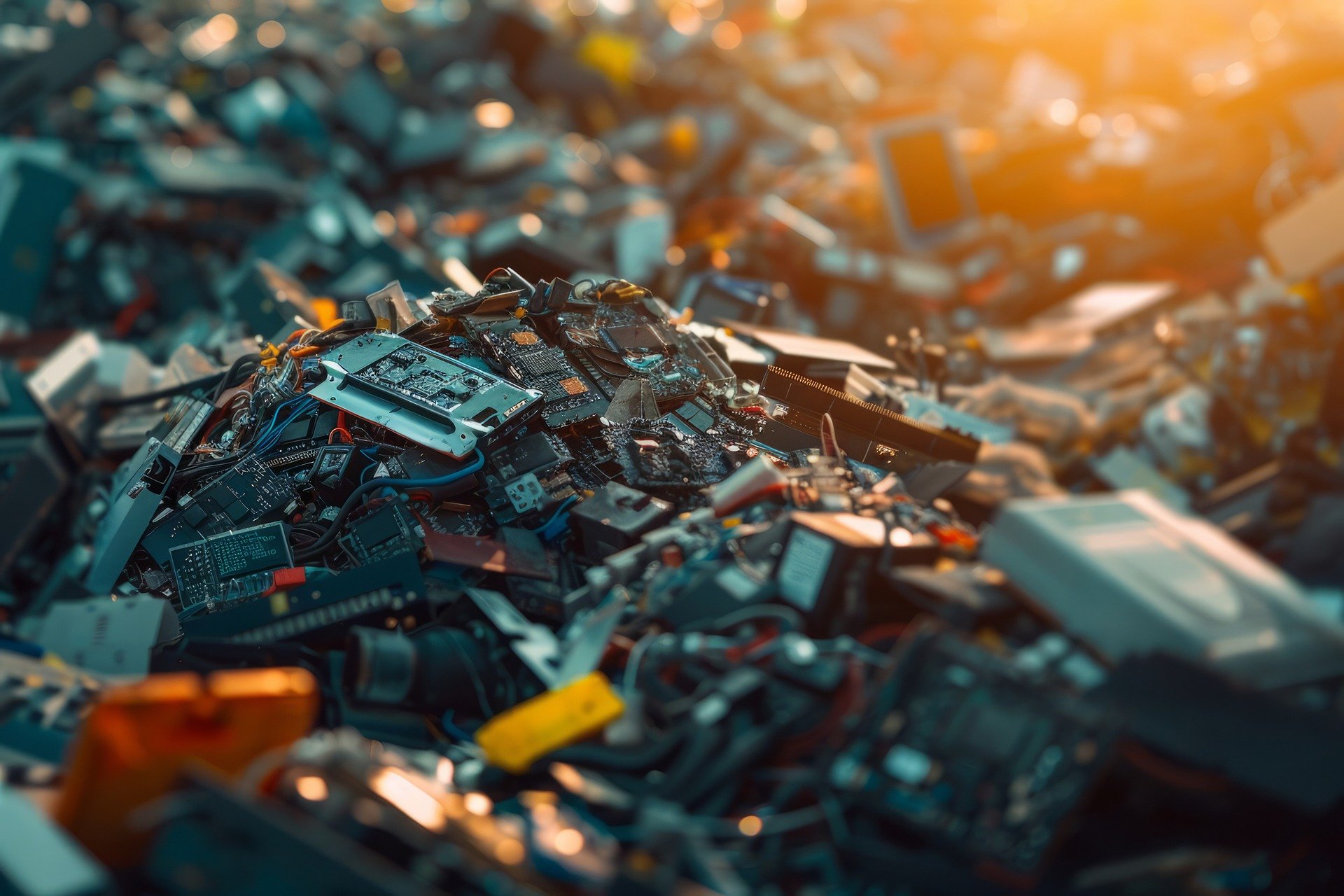In a groundbreaking achievement for space exploration, SpaceX made history on Sunday by successfully catching the booster stage of its massive Starship rocket using a pair of robotic arms, referred to as “chopsticks.” The booster, part of the 71-meter (233-foot) Super Heavy rocket, was captured at SpaceX’s launchpad in Boca Chica, Texas, after separating from the upper stage. This marked a crucial moment for the company’s ambitious vision of developing fully reusable rockets, a key component in making space travel more sustainable and cost-effective. The mission was not only a technical success but also symbolized a new era in space innovation, drawing admiration from astronauts, engineers, and space enthusiasts around the world.
The uncrewed Starship’s fifth test flight began at 7:25 AM local time (1325 BST) when the rocket blasted off from southern Texas. After ascending to about 40 miles (65 kilometers) above the Earth, the Super Heavy booster separated, allowing the upper stage to continue its journey. The upper stage reached an impressive altitude of nearly 90 miles, completing a loop around the Earth at a speed of 17,000 mph. The stage successfully splashed down in the Indian Ocean as planned, while the booster began its controlled descent back to the launch site. This marked the first time SpaceX attempted to recover the booster using the “mechazilla” tower, a crucial step in its mission to create reusable space vehicles.
The SpaceX team erupted in cheers as the descending booster reignited three of its Raptor engines, carefully slowing its fall toward the ground. The booster’s precise maneuvering allowed it to align with the launch tower’s “chopsticks” arms, which caught it securely, marking a triumphant moment for the spaceflight community. Dan Huot, SpaceX’s communications manager, was in awe of the accomplishment, remarking, “What we just saw, that looked like magic.” The bold feat of engineering, described as a major leap in reusable rocket technology, brought new possibilities for SpaceX’s long-term goals of transporting humans and supplies to destinations like the moon and Mars.
The upper stage of the Starship, meanwhile, had its own success story. Re-entering the Earth’s atmosphere horizontally, onboard cameras captured the moment the ship was enveloped in a pinkish-purple plasma as it descended. The ship’s hot side, protected by 18,000 heat-shielding tiles, was improved following damage sustained during a test in June. This time, the tiles remained intact, and the spacecraft reignited one of its six engines to position itself for a smooth ocean landing. The splashdown, near Australia’s coastline, marked another crucial moment in the mission, though the ship later toppled over and exploded in a fiery detonation, raising questions about the cause.
Despite the dramatic conclusion of the upper stage, SpaceX CEO Elon Musk took to social media to share his excitement. He confirmed that the ship had landed “precisely on target,” which could suggest that the explosion was either a controlled detonation or caused by an unforeseen issue, such as a fuel leak. While the exact cause of the explosion remains unclear, the overall success of the mission demonstrated the robustness of SpaceX’s Starship program. With each test flight, the company continues to push the boundaries of what is possible in space travel, refining its designs and moving closer to its vision of reusable spacecraft.
SpaceX’s accomplishment with the Starship booster has sent ripples through the space exploration community. Canadian astronaut Chris Hadfield praised the achievement, calling it an “enormous step forward in human capability.” His comments echoed the sentiments of many who see this as a pivotal moment in the future of space exploration. By mastering the recovery and reuse of rocket boosters, SpaceX is not only reducing the cost of space missions but also paving the way for more frequent and accessible space travel, which could accelerate humanity’s ambitions for deeper space exploration.
The mission’s success also highlights SpaceX’s commitment to innovation, particularly in the realm of reusable technology. Catching a falling booster with robotic arms represents a new chapter in spaceflight, offering a solution that could drastically reduce turnaround times between missions. The ability to reuse both the booster and the upper stage will be essential for long-duration space missions, especially those aiming for the moon, Mars, and beyond. As SpaceX continues to refine its technology, the dream of regular space travel is becoming more tangible, with the potential to revolutionize space exploration as we know it.
With more test flights on the horizon, SpaceX’s Starship program is inching closer to realizing its goal of creating a fully reusable spacecraft system. The implications of this achievement extend beyond just space exploration, potentially influencing other industries and fostering advancements in engineering, robotics, and aerodynamics. The successful recovery of the Starship booster, coupled with the valuable lessons learned from the upper stage’s splashdown, underscores the importance of persistence and innovation in reaching new frontiers. For now, SpaceX continues to lead the charge in shaping the future of space travel, with Elon Musk’s vision of interplanetary colonization drawing ever closer to reality.




